Traditional Dyes! Make Your Own Hand Towel At Tenukuri Studio

Decorated with a wide variety of designs, tenugui is a Japanese hand towel made using traditional dyeing methods. Experience dyeing your own tenugui at Tenukuri Studio.
Tenugui - Beautiful and Practical Hand Towels
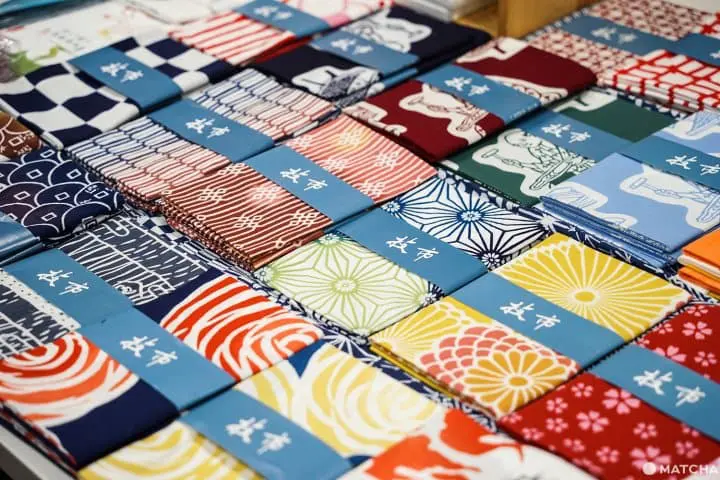
With rich colors and retro designs, these traditional towels are used every day in Japanese life.
Tenugui are thin, rectangular fabrics originally used as hand towels. However, by the Heian period (794 - 1185), tenugui were often used to clean and wrap various objects.
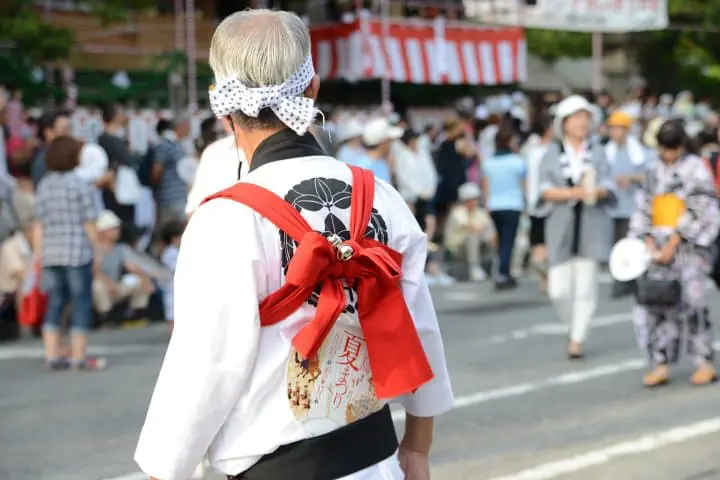
Tenugui are often worn as headbands at festivals. Photo by pixta
Today, kendo athletes wrap tenugui around their foreheads before donning their armor. Likewise, people at festivals can be seen using tenugui as headbands.
Tenugui have beautiful designs and colorful patterns. They are also affordable, and are easy to wash! Sometimes, people frame their tenugui and hang them on walls as decoration. You can pick up tenugui at department stores and 100-yen shops, but Tenukuri Studio uses traditional methods to dye their own towels.
Now, what if you could dye your own tenugui?
Tenukuri Studio - Experience Traditional Dyes
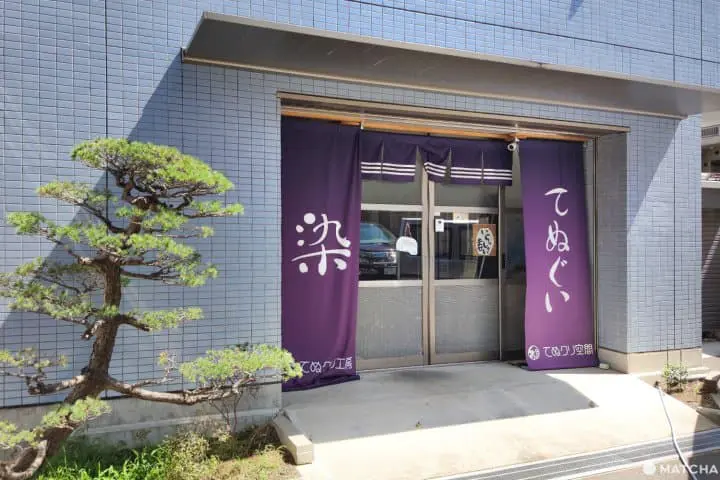
To answer that question, we visited Tenukuri Studio near Keisei Tateishi Station in Tokyo.
Here, you can participate in a short tenugui dyeing workshop. Over a course of two hours, you'll hands-on with a traditional dyeing method known as chusen. After the experience, you can take home two of your very own tenugui!
If you want to dive deeper into traditional dyeing, they also offer more in-depth workshops. For more details and registration, check their official website (English).
Access
Take the Keisei Line from Keisei Ueno Station to Keisei Tateishi Station. Walk five minutes from Tateishi Station to arrive at Tenukuri Studio. The studio is located on the first floor of the Tokyo Wazarashi building. Click on the link below to check the location.
Learn about Tenugui Dyeing

When you first enter the building, you'll find their store. We'll come back here a little later. For now, let's head over to the workshop on the left-hand side of the hall.
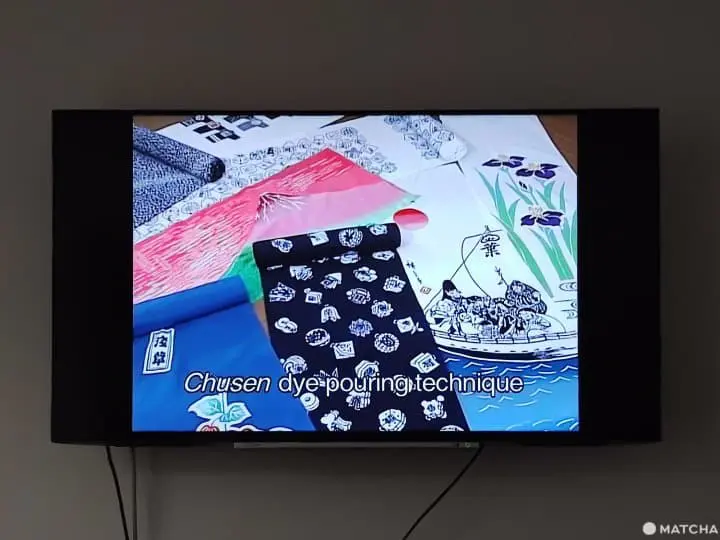
When the workshop begins, you will watch a video about the history and process of chusen dyeing. You can choose between Japanese or English narration.
The video shows the process of preparing the fabric and the dyes. Watching actual artisans is a great way to learn more about this craft.
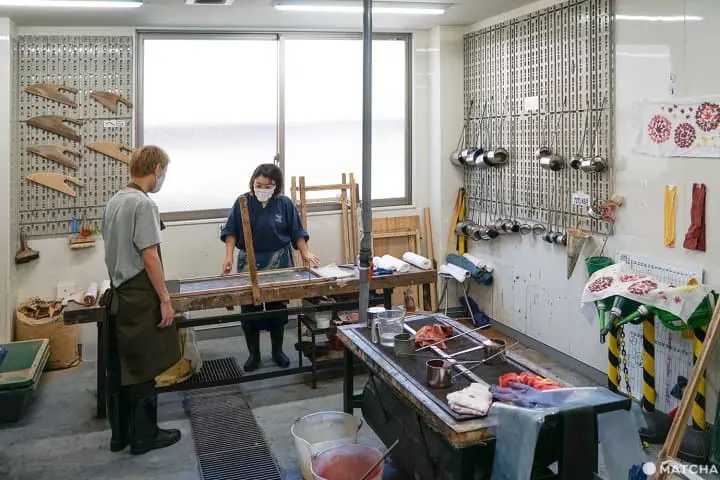
Now it's time to put on an apron and a pair of boots. You will be guided to a workspace filled with various tools.
Norioki - Preparing the Base Layer
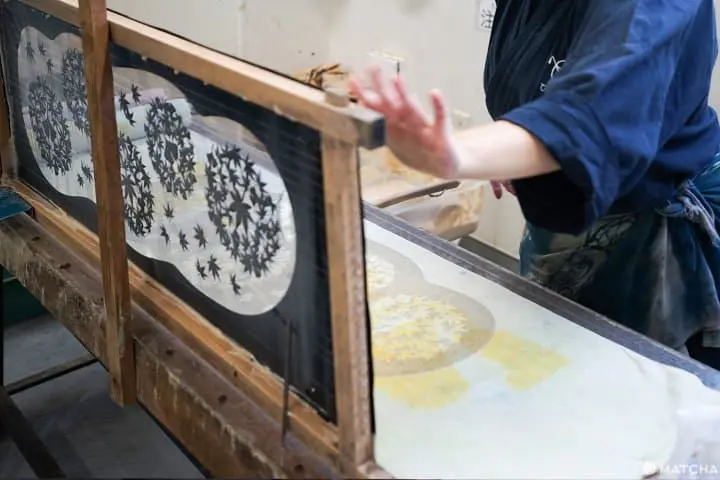
The black area is the stencil.
To begin, you will use a stencil set inside a wooden frame. Since the process involves moving the frame up and down, you will fix the frame onto a metal rod on the workbench.
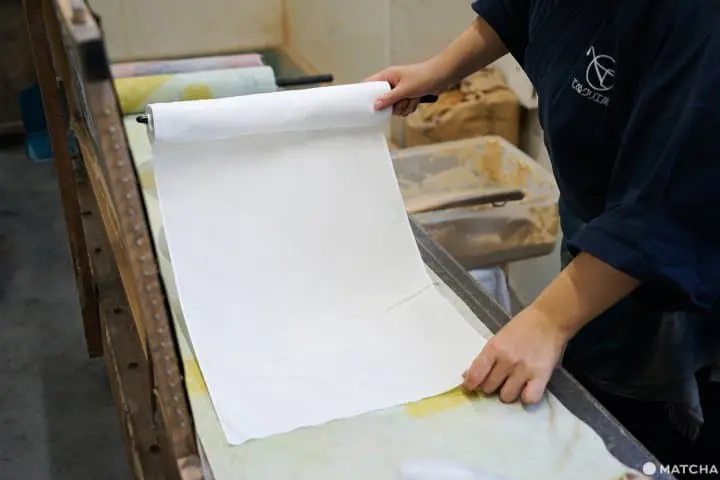
The cloth used isn't separate pieces, but one long piece!
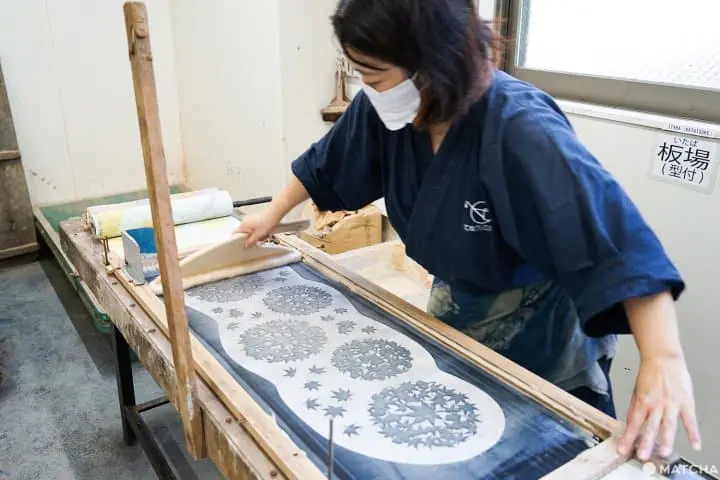
After setting up the cloth, you use a spatula to scoop a dollop of glue and spread it over the stencil. The glue is made from rice bran and other natural ingredients, making it easy to wash off.
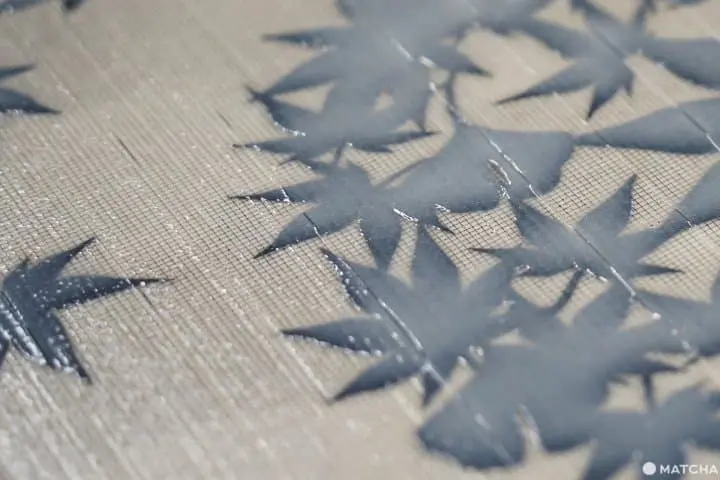
The glue spread over the black parts of the stencil will not seep into the cloth underneath.
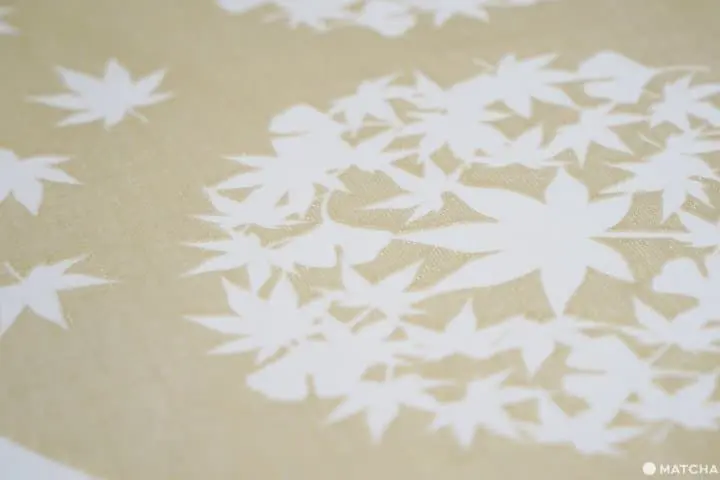
When you lift the frame, you will see beautiful white leaf patterns on the cloth. Only the white areas without any glue will be dyed.
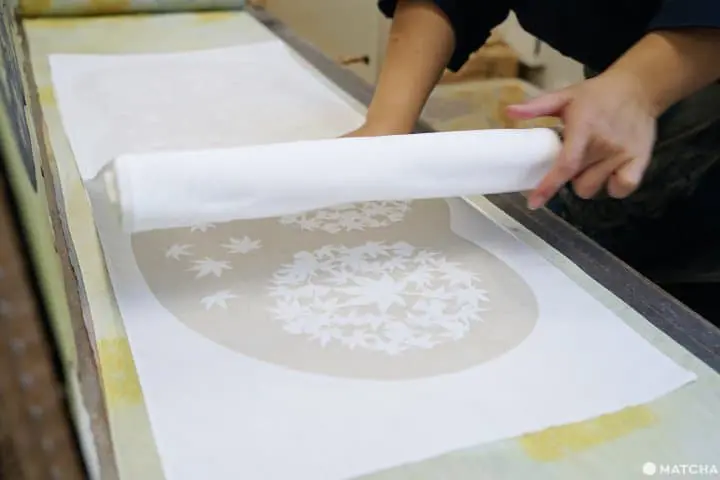
The process of masking the cloth with glue is known as norioki. When you finish masking one section of the cloth, you fold over a new section. The process is repeated for each tenugui that will be dyed.

The instructor made the process look easy, but spreading the glue is a bit tricky! It has to be spread evenly across the entire section of cloth.
According to the instructor, it is better to mask the cloth in one motion without stopping partway. Stopping creates unevenness in the layer of glue.

Once all the norioki is done, you cover the cloth with scrap fabric to keep it clean. If you check the first photo, you can see the same fabric being used as an underlay.
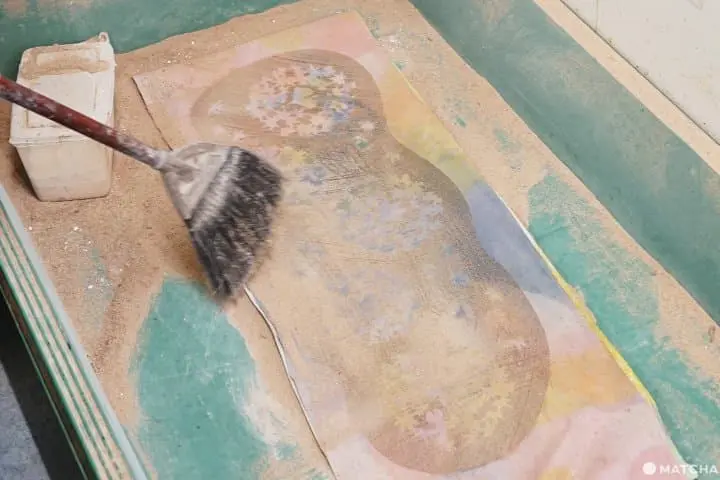
Next, you cover the cloth with sawdust to remove the glue's stickiness. Without this step, the glue would stain the cloth and ruin the design.
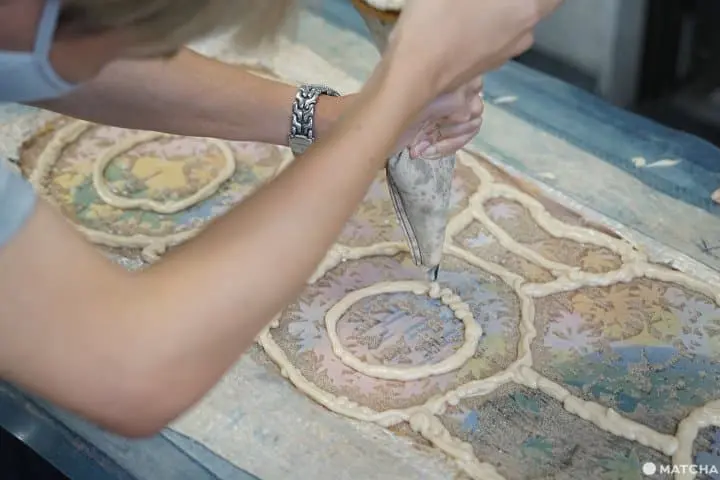
If you want to dye the cloth a single color, you can just pour the dye here. But, if you want to make a multi-color dye, you'll have to create dividers using glue. It's a lot like decorating a cake!
Chusen - Traditional Dyeing Method
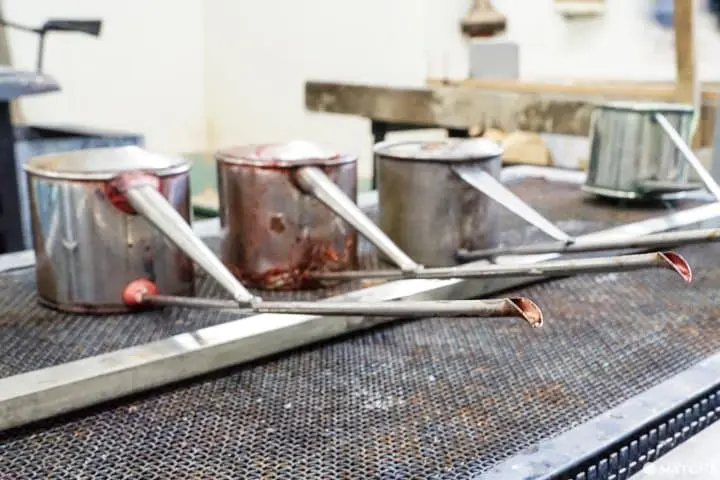
Now, it's time to dye the cloth. This method, known as chusen, uses a special kettle with a long spout to pour the dye onto the cloth.
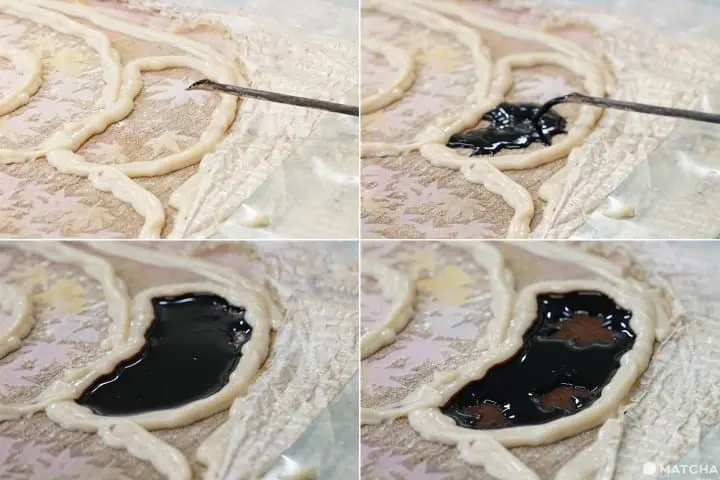
The fabric is dyed on a stand with a built-in compressor. This stand lets excess dye soak through its mesh.
Pour the dye into each space until it is full. Then press the pedal to activate the compressor, and watch the dye seep through each layer of cloth. This chusen method makes it possible to mass produce tenugui.
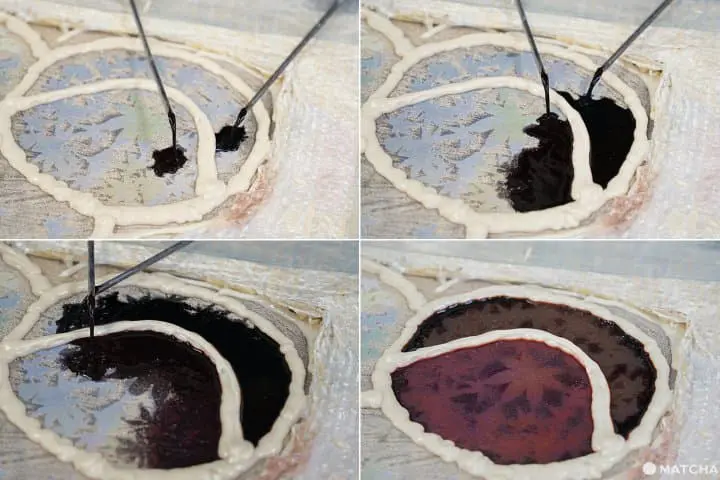
Next, we learned about bokashi-zome. This involves pouring two different dyes simultaneously, creating a gradient. If you were to pour one color, it would dye the cloth first. To create a gradient, you have to hold two kettles and pour both colors at the same time.

The instructor will help you pour at first.
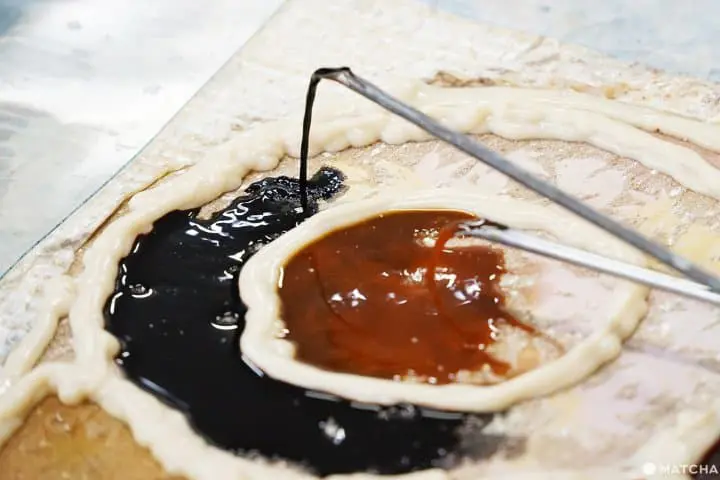
But then you're on your own. You have to cross the two spouts, and pour dyes on different sections of the cloth. Stay focused and keep the dye from spilling!
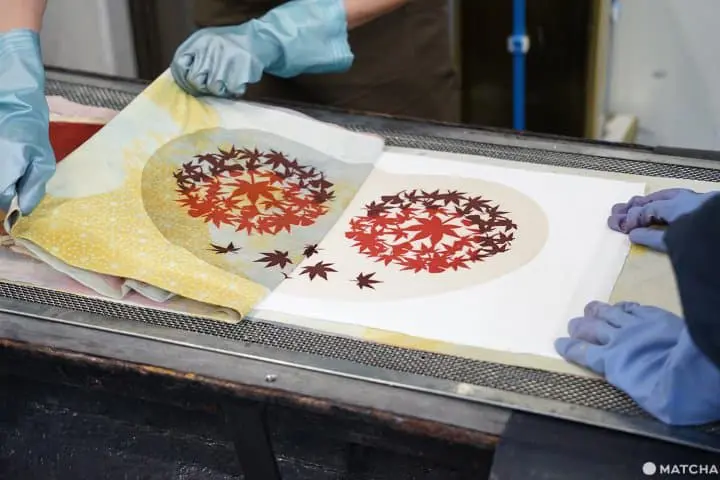
Normally, after the dyeing is done, you let the cloth sit for a couple hours. This is so the dye settles into the cloth. However, to save time, you will use a chemical that speeds up oxidation. Once the dye settles, you remove the outer cloth.
Rinsing the Cloth
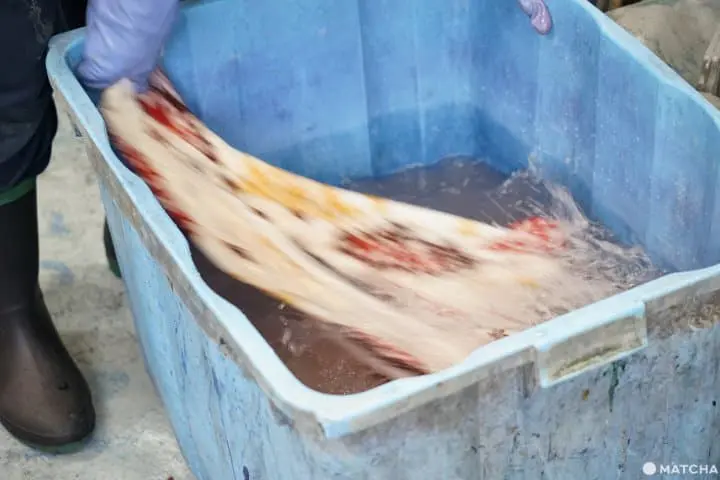
Finally, you soak the cloth in water and rinse off any excess glue and dye.
Your Very Own Tenugui!
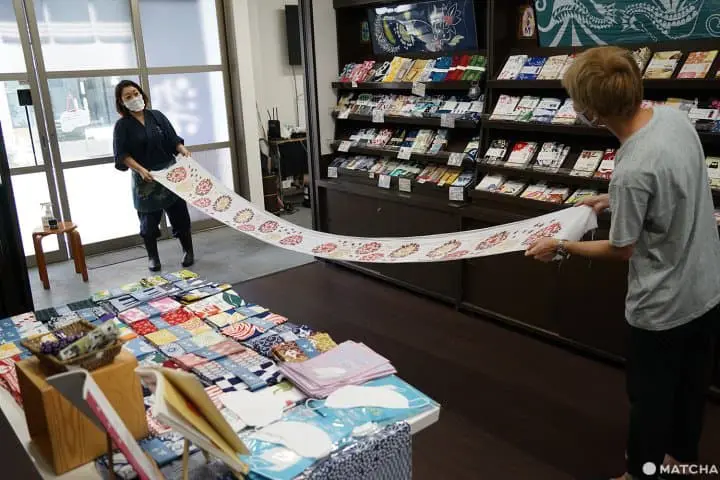
When we spread out our cloth, we were surprised by how long it was! Tenugui that are on sale are made from a piece of cloth several dozen meters long. To dry the cloth, a pulley is used to hang it on a tall pole.

Just cut the cloth into the right size and you have your very own tenugui! The stencils change with each season, and you can check them on Tenukuri Studio's website. When we visited the studio just before autumn, the designs were maple and ginkgo leaves.
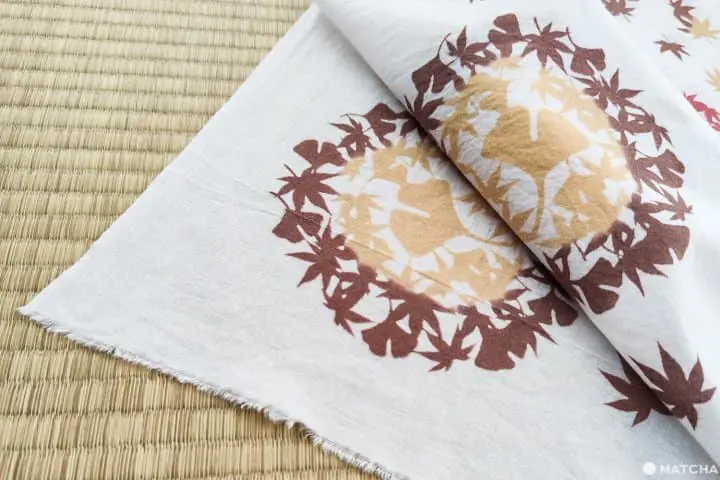
Tenugui dyed using chusen show their designs from front to back; you can turn them over on either side and still enjoy the beautiful dyes.
We asked the instructor about a certain aspect of tenugui. Why are the ends not sewn?
"What makes tenugui special is its thinness and ease of drying. If we were to fold the ends and sow them, the tenugui would not dry as easily, and would cause bacteria to grow," the instructor explained. The ends are purposefully left exposed so the tenugui can dry quickly.
If the ends become frayed, you can trim the strings, and the fraying will naturally stop at a certain point.
Find a Tenugui to Decorate Your Home
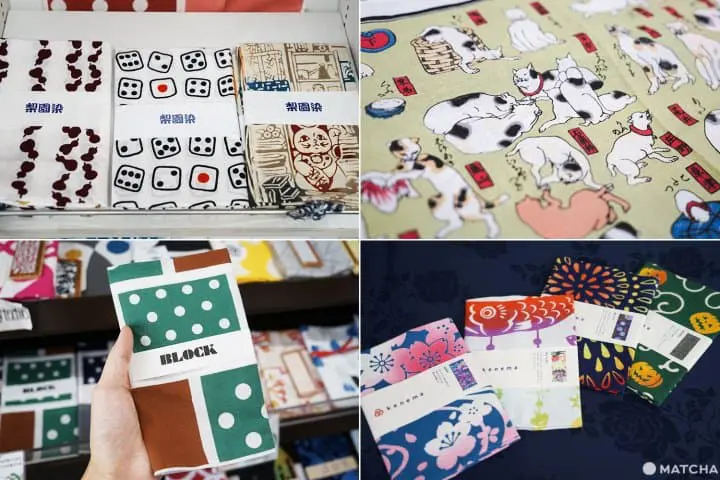
Their store sells a wide variety of tenugui, from traditional Japanese dyes to modern designs. Among them include tenugui that were designed and dyed by professional designers.

A number of tenugui are framed as interior decoration. If you pick up your own frame, you can hang different tenugui to change up the look of your home with each season or mood. It's an easy way to add some color to your living space.
Visit Tenukuri Studio if you are interested in tenugui, or you want to dye your very own tenugui!
In cooperation with Tenukuri Studio











































![[Corporate Visit List] Near Kansai Airport! Discover Japan’s Technology and Business Philosophy through Industrial Tourism](https://resources.matcha-jp.com/resize/720x2000/2024/12/13-215168.webp)
![["Secret Beauty: The Complete Works of Komura Setsutei" ~ March 1, 2026] "Abeno Harukas Art Museum"](https://resources.matcha-jp.com/resize/720x2000/2026/01/09-255274.webp)